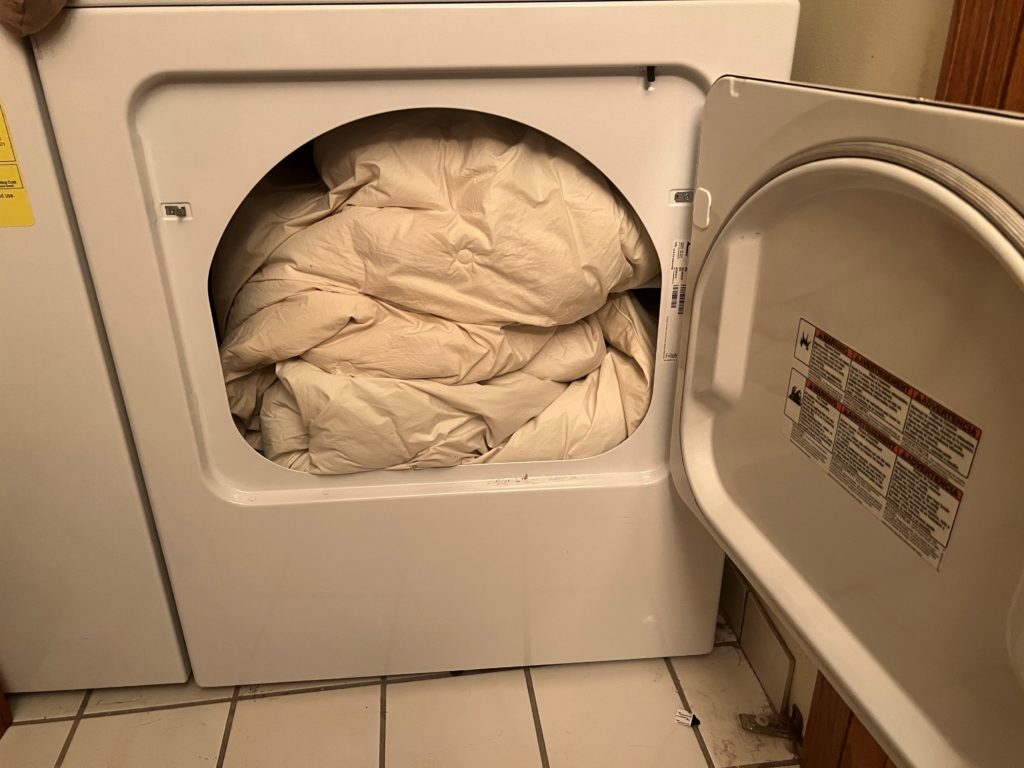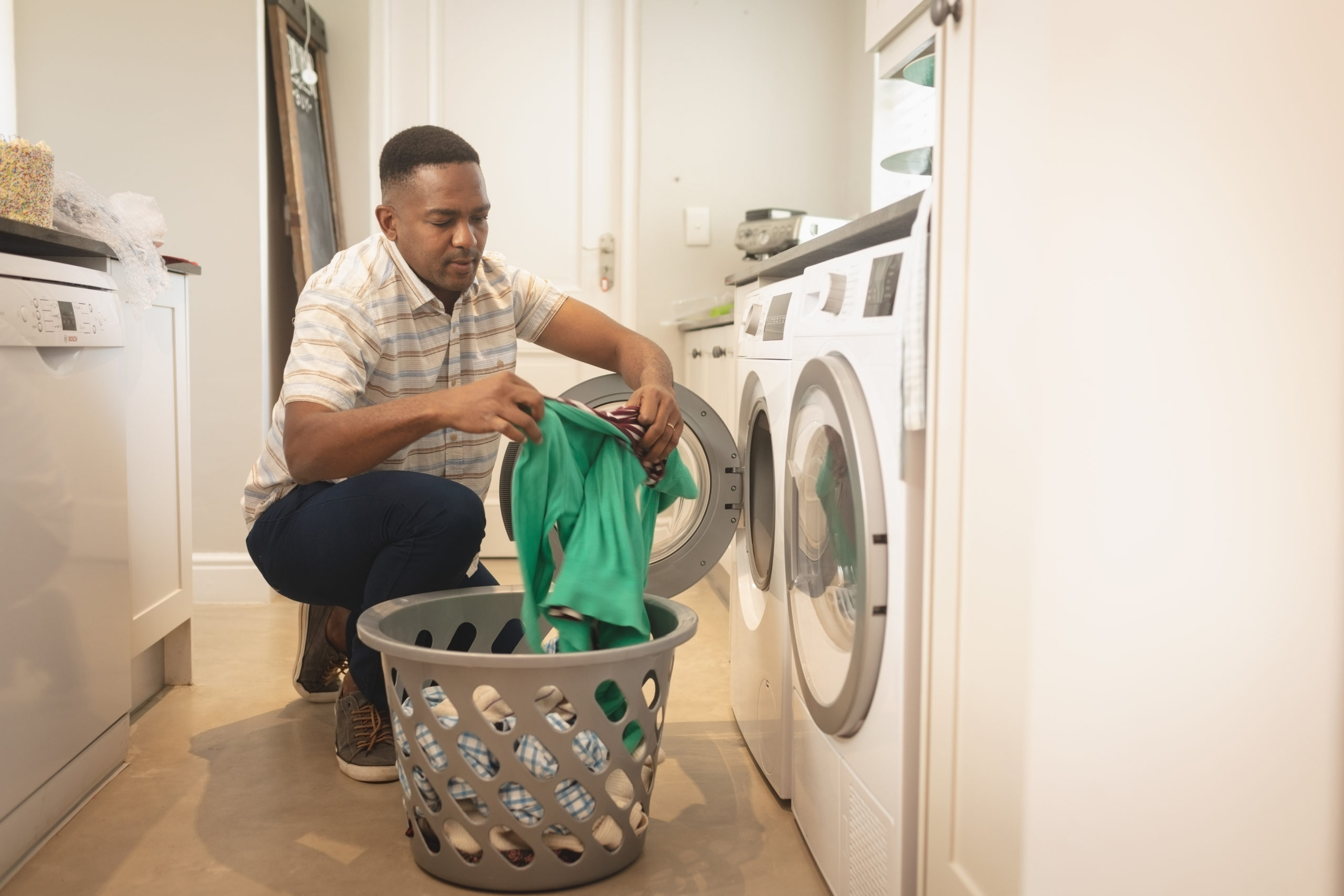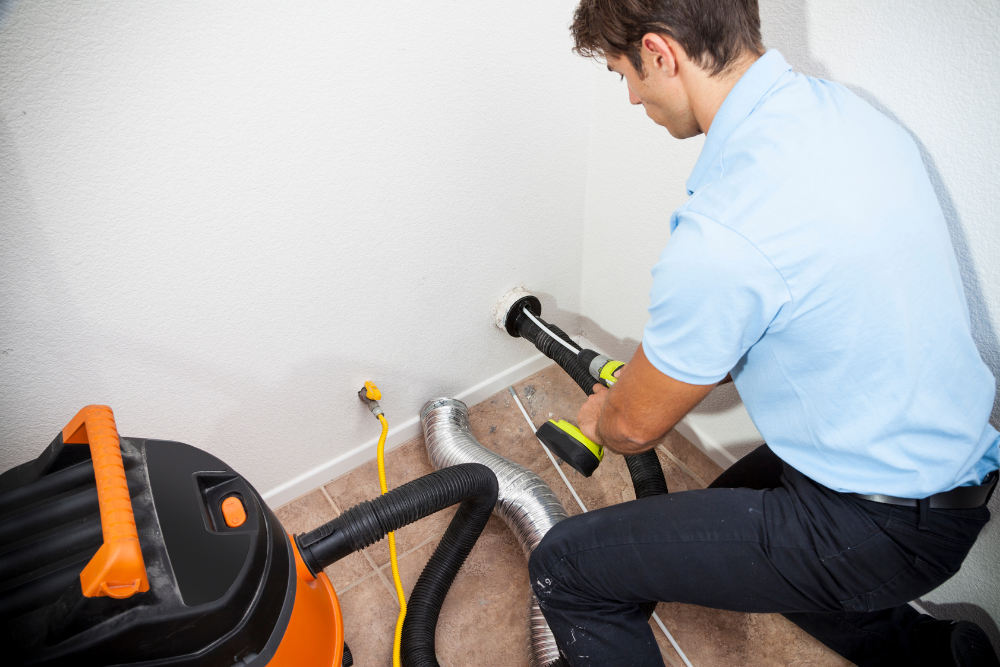At some point during the 10-to-18-year lifespan of your clothes dryer, the drum will stop spinning. This problem never occurs at a convenient time and sets us behind in our regular weekly schedule. Not to worry, as this is a common repair problem; certain dryer parts will wear out or weaken as the dryer ages, resulting in your dryer not spinning.
Please Note: Our Dryer Doctors experts have repaired this exact problem numerous times. You may call or request dryer repair service in the form below, and we will respond quickly. Please read this page thoroughly before attempting to correct the problem yourself.
Before assuming a component has failed, first check to see if:
- The dryer is plugged in.
- A breaker has not tripped.
- The door is closed tightly.
If these check out, the issue with your dryer is likely one of the following.
6 Reasons Why Your Drum Is Not Turning
There are several reasons why your dryer has stopped spinning. Repairing the dryer, depending on the issue, can be fairly simple or complex. One or more parts may need replacing. Determining which components have failed will require access underneath the drum. This article covers six possibilities:
- Broken Drive Belt
- Drum Roller Failure
- Roller Axle Failure
- Slide, Glide or Pad Failure
- Drum Bearing Failure
- Motor Failure
Caution: If you attempt to fix your dryer yourself, always unplug the cord, and wear safety gloves when removing the front panel and bulkhead. The items below require removing the front of the dryer, the front panel, and the bulkhead to perform the repair. The process will vary depending on your dryer brand.
Time Required: Most dryer repairs require 45 minutes to 2.5 hours, depending on your experience level, the part that needs replacing, dryer brand. Certain clothes dryers may require 6 to 10 screws removed to prep the dryer for disassembly, while others may have up to 20 screws. In addition, it may require disconnecting electrical components to gain access to the part that needs replacing.
Broken Belt
The drive belt is a long, slender belt that wraps around the dryer drum, a tension pulley, and then around the drive motor pulley. Over time, the belt can break from regular use. If the belt is broken, the drum will not turn.
To quickly determine if the belt is broken, reach into the dryer and turn the drum by hand. If the drum spins easily, the belt is likely broken. Before ordering a new one, you will need access underneath the drum to confirm it is broken.
Drum Roller Failure
Most dryers have two drum rollers at the rear of the dryer. Some models use rollers on the front as well. The rollers must spin freely to work properly. When rollers fail, the dryer may not turn properly.
Remove the belt from the dryer and try turning the drum by hand. Check the support rollers for wear if the drum does not rotate freely. You will need to remove the drum to do this. If you need to replace one or more, we have found cleaning the shaft thoroughly before installing the new rollers is best.
Roller Axle Failure
Remove the belt from the dryer and try turning the drum by hand to determine if the support rollers are worn. You may hear a noise when turning if the rollers aren’t in good condition.
If the drum does not rotate freely, remove the drum and visually inspect the support rollers for wear. If the rollers spin freely without wobbling, replacement is not needed. If a roller wobbles and does not spin freely, we recommend replacement. As a preventative measure, clean all axles before installing new rollers.
Slide, Glide, or Pad Failure. (Described by various names)
Some brands utilize these to support the front of the drum. If worn, the drum may catch or bind, inhibiting consistent rotation. These drum glides are small plastic pieces supporting the dryer drum’s front.
As the drum rotates, it slides on these plastic pieces. As the drum glides wear, the drum can start binding, resulting in strain on the motor. If this happens, the motor shuts down, preventing the dryer from turning.
To determine if the drum glides require replacement, inspect each for wear. If one or more of the glides is compromised, replace all of the glides as a set.
Drum Bearing Failure
The drum bearing is located on the rear of the dryer drum. If the drum bearing has worn to a point where the drum is not turning freely, it strains the motor, which can result in the dryer stopping mid-cycle.
To determine if the drum bearing is at fault, remove the dryer belt and try to spin the drum by hand. If the drum rotates freely, it is unlikely that the drum bearing has failed. If the drum does not rotate freely or makes a noise when turning, replace the bearing.
Motor failure
The drive motor turns the drum and the blower wheel to exhaust the air. First, check the motor to see if it makes a humming noise. If the engine still hums, remove the belt and check the blower wheel to ensure it is not obstructed. Next, with the belt removed, try rotating the drum by hand.
If the drum does not rotate freely, determine what is causing the drum to bind. The drive motor might be defective if the drum turns freely and the blower wheel is clear of obstructions. If you suspect the motor is at fault, replace it.
We Have You Covered!
We have seen each of these dryer problems numerous times and would be happy to diagnose and repair your unit. Our online scheduling is simple and efficient and will quickly walk you through the process. You may also speak to one of our friendly office staff by phone.






